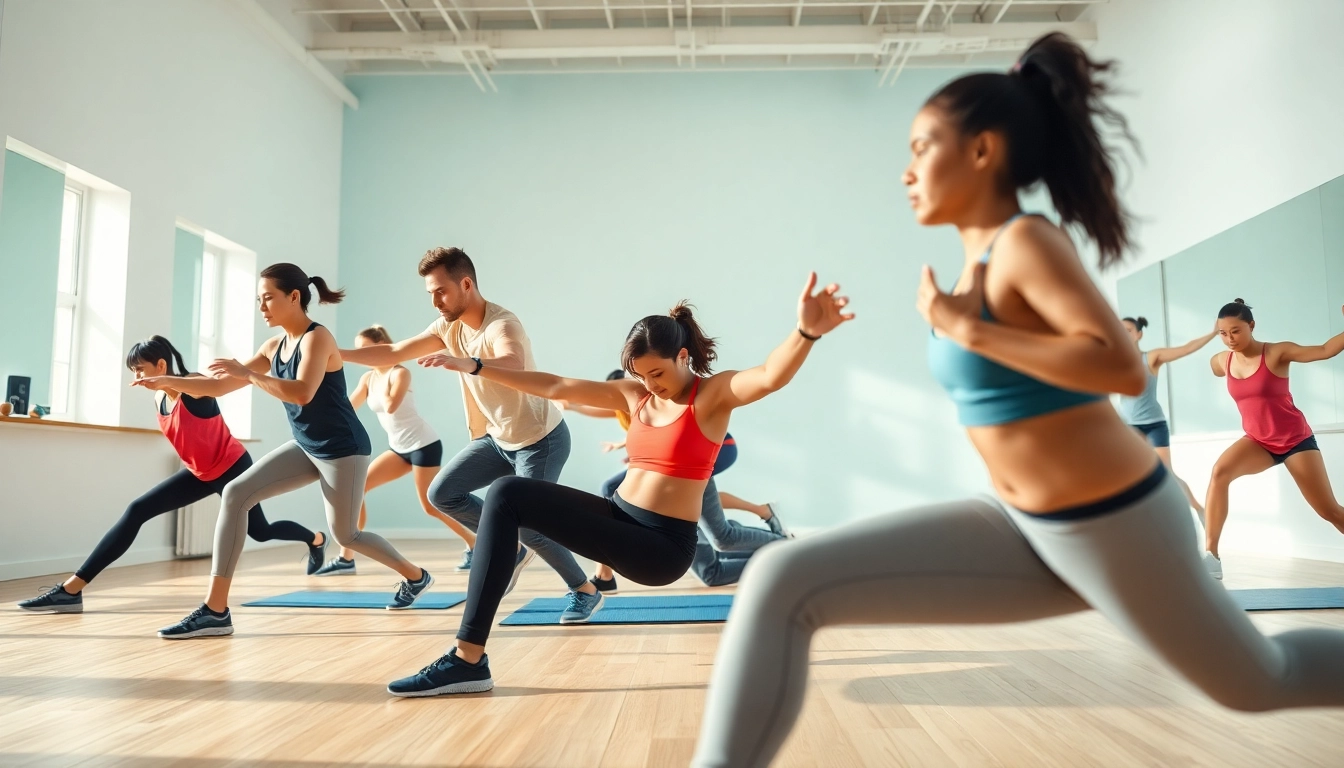Boost Your Performance with Effective Mobility Training Techniques

Understanding Mobility Training
Mobility training has emerged as a cornerstone of modern fitness regimes, playing a crucial role in not just athletic performance but also in everyday movement and wellness. Defined as a specific type of exercise aimed at improving the movement quality of individuals through increased range of motion in joints and surrounding muscles, mobility training is fundamental in enhancing both functionality and injury prevention. As the fitness landscape continues to evolve, understanding the nuances of mobility training becomes increasingly important.
What is Mobility Training?
At its core, mobility training focuses on enhancing the body’s ability to move freely and efficiently. Unlike traditional stretching programs, which primarily emphasize flexibility, mobility training involves strengthening the muscles and joints through controlled movement patterns. This process not only increases joint range of motion but also boosts stability and coordination, making mobility training integral to overall fitness.
Mobility work incorporates various techniques and exercises that challenge the body’s movement capabilities. These exercises range from dynamic movements, such as lunges and squats, to static holds, like stretches that engage multiple muscle groups simultaneously. The aim is to develop specific motor skills that can help improve everyday activities and athletic performance.
Benefits of Mobility Training
Engaging in mobility training offers a wide array of benefits, regardless of age or fitness level. Below are some of the key advantages:
- Injury Prevention: Improved mobility supports correct movement patterns, which significantly decreases the risk of injuries sustained during athletic activities or daily tasks.
- Enhanced Performance: Athletes find that increased mobility translates to better performance, as it allows for more effective movements and techniques in sports.
- Improved Posture: Regular mobility work addresses muscular imbalances often caused by sedentary lifestyles, leading to better posture and reduced back pain.
- Greater Range of Motion: Increased flexibility within the joints enables individuals to perform a wider variety of exercises with greater efficiency.
- Improved Recovery: Incorporating mobility training into a post-workout routine can enhance recovery times and lead to better long-term muscle health.
Common Misconceptions
Though mobility training is gaining popularity, there are a few misconceptions that can mislead individuals about its true nature:
- Mobility is Just Stretching: While flexibility is a critical component, mobility encompasses the active movement capability within that flexibility. It’s about movement control rather than purely lengthening muscles.
- Only Athletes Need Mobility Training: Everyone, regardless of their fitness background, should prioritize mobility training to maintain and improve functional movement.
- Mobility Training is Time-Consuming: Effective mobility routines can be integrated into just a few minutes per day, making it accessible for anyone with a busy lifestyle.
Key Components of Mobility Training
Flexibility vs. Mobility
Understanding the difference between flexibility and mobility is essential for effective training. Flexibility refers to the ability of a muscle or group of muscles to lengthen passively through a range of motion. In contrast, mobility is about actively controlling that range of motion. This distinction is crucial when designing a training program, as each contributes to overall movement quality in different ways.
Stability and Strength
Mobility cannot be achieved without a strong foundation of stability and strength. Stability refers to the ability to control movement around a joint, while strength is the force produced by muscles. Mobility training intertwines these elements by incorporating movements that require both strength and stability to ensure that joints remain supported throughout their range of motion.
Range of Motion Exercises
Incorporating specific exercises aimed at improving the range of motion in various joints plays a fundamental role in mobility training. These exercises can be tailored to target problem areas or enhance overall movement patterns, often focusing on common joints such as the hips, shoulders, and ankles.
- Hip Circles: Improve hip mobility by executing controlled circular movements at the hip joint.
- Shoulder Dislocates: Use a resistance band or broomstick to engage and mobilize the shoulder joint through various ranges.
- Ankle Dorsiflexion: A critical movement for squats and running, focusing on ankle flexibility enhances performance in these movements.
Effective Mobility Training Techniques
Dynamic Stretching
Dynamic stretching is a key technique within mobility training that prepares the muscles for movement. Unlike static stretches, which are held in place, dynamic stretches involve active movements that help increase blood flow and activate the muscles.
Some effective dynamic stretches include:
- Walking Lunges: Lunges with a forward motion activate the hip flexors and increase leg mobility.
- Leg Swings: Swinging each leg forward and backward helps mobilize the hip joint while engaging the entire lower limb.
- Arm Circles: This helps in mobilizing the shoulder joint and prepares the upper body for dynamic movements.
Static Stretching for Recovery
Static stretching is a method of lengthening muscles after intense workouts, promoting recovery and improving overall flexibility. By holding stretches for 20-30 seconds, muscles are allowed to relax, which aids in the recovery process.
Notable static stretches include:
- Hamstring Stretch: Crucial for those engaged in activities involving heavy leg usage.
- Pigeon Pose: Effectively opens up the hips and stretches the glutes.
- Cat-Cow Stretch: A combination stretch that improves spinal flexibility.
Foam Rolling Techniques
Foam rolling is a self-myofascial release technique that helps reduce muscle tension and improve tissue elasticity. By rolling out muscle groups with a foam roller, individuals can relieve tightness, enhance circulation, and prepare the body for effective mobility training.
Some recommended foam rolling techniques are:
- Quadriceps Roll: Targeting the quads helps relieve tightness for better squatting mechanics.
- Back Roll: Rolling along the upper and lower back releases tension and improves mobility.
- Calf Roll: Ensures full calf flexibility, particularly important for runners.
Incorporating Mobility Training into Your Routine
Creating a Daily Mobility Routine
To fully reap the benefits of mobility training, incorporating it into your daily routine is essential. This can be structured as a short session before workouts, integrated with strength training, or performed independently.
A simple daily routine can include:
- 5 minutes of dynamic stretching before the workout.
- 5 minutes post-workout focused on static stretching.
- Integrating foam rolling 2-3 times a week.
Integrating Mobility into Strength Training
Mobility training can seamlessly complement strength workouts. Incorporating mobility exercises between sets allows for enhanced recovery while keeping muscles engaged. This not only helps maintain flexibility but also improves the overall effectiveness of strength movements.
For instance, pairing squats with ankle mobility drills can significantly improve squat form and depth, allowing for better muscle engagement during the exercise.
Tips for Homestyle Mobility Practice
For those who prefer home workouts, mobility training can be easily performed without any equipment. Here are some tips:
- Create a dedicated space for mobility training to enhance focus.
- Utilize bodyweight exercises that emphasize range of motion.
- Find online resources or videos to follow along, ensuring proper techniques are used.
Measuring Your Mobility Improvements
Performance Metrics to Track
Monitoring improvements in mobility can be done through various performance metrics. These can include:
- Joint range of motion measured with a goniometer.
- Performance in flexibility tests, such as the sit-and-reach.
- Execution of complex movements, such as deep squats or overhead reaches, to assess functional mobility.
How to Set Realistic Goals
Setting achievable goals is crucial for sustained progress in mobility training. Consider the following when establishing your mobility goals:
- Focus on specific areas of improvement, such as increasing hamstring flexibility or hip mobility.
- Track progress through consistent testing over predetermined intervals.
- Emphasize process-oriented goals, like committing to a set number of mobility workouts per week, rather than only outcome-focused goals.
Adjusting Your Training Based on Progress
Routine adjustments based on progress are vital as you advance in mobility training. Regular assessments should guide whether to challenge yourself with more complex movements or focus on recovery and maintenance. Ensure to listen to your body and adapt your techniques accordingly, allowing for rest and recuperation as needed.



Leave a Comment